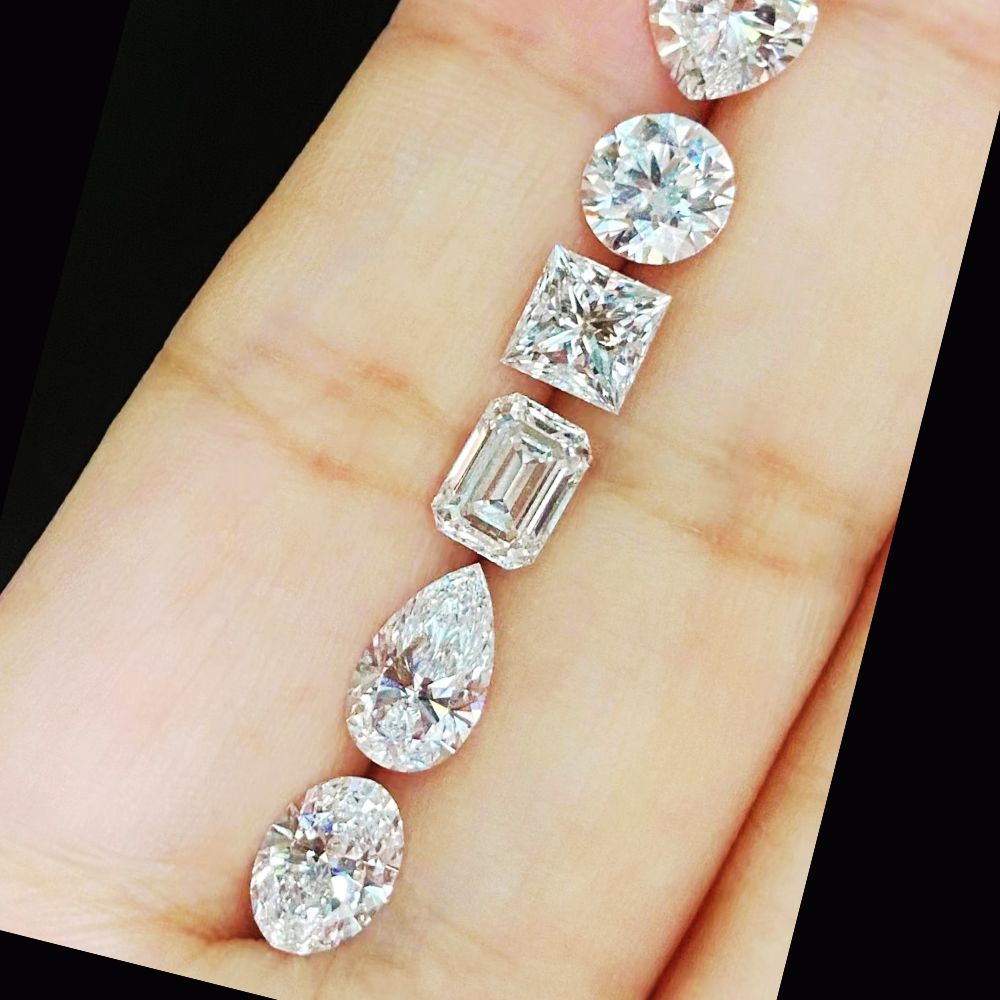
What are Lab-Grown Diamonds
Share

What Are Lab-Grown Diamonds?
In recent years, lab-grown diamonds have been gaining traction as an ethical, sustainable, and affordable alternative to natural diamonds. But what exactly are lab-grown diamonds, and how do they compare to their natural counterparts? In this blog, we'll dive into the different classifications of diamonds, explain how lab-grown diamonds are made, and explore why their price is a fraction of what you’d pay for a natural diamond.
The Two Types of Diamonds: Natural vs. Lab-Grown
At their core, diamonds are diamonds, whether they are formed in the Earth's crust over billions of years or created in a laboratory within weeks. The key difference lies in their origin.
-
Natural Diamonds: These diamonds are created deep within the Earth under extreme pressure and heat. The process takes billions of years, and these diamonds are brought to the surface through volcanic eruptions or mined from deep within the Earth. Because of their long and complex formation, natural diamonds are often rare, especially the larger and more flawless stones.
-
Lab-Grown Diamonds: Lab-grown diamonds are created in a laboratory setting that mimics the conditions under which natural diamonds are formed. These diamonds can be made in weeks, yet they are chemically, physically, and optically identical to natural diamonds. This means they are real diamonds, not synthetic imitations like cubic zirconia or moissanite.
Despite their different origins, lab-grown diamonds possess the same properties as natural diamonds—they are just created much faster and in a more controlled environment.
The Process of Creating Lab-Grown Diamonds
Lab-grown diamonds are created using one of two methods: High-Pressure High-Temperature (HPHT) or Chemical Vapor Deposition (CVD).
-
High-Pressure High-Temperature (HPHT):
- This method simulates the natural conditions under which diamonds form deep in the Earth. Using a press, carbon is exposed to extreme pressure and high temperatures to crystallize into diamond form. HPHT diamonds are commonly used in industrial applications, but they are also available for fine jewelry.
-
Chemical Vapor Deposition (CVD):
- In this process, a diamond seed is placed in a vacuum chamber filled with carbon-rich gases. The gases are heated until the carbon atoms bond with the seed, causing the diamond to grow layer by layer. The CVD method is highly efficient and produces high-quality diamonds suitable for use in fine jewelry. It also allows for better control over the diamond's size and shape.
Both methods produce diamonds that are indistinguishable from natural diamonds, even to trained gemologists without specialized equipment.
Why Lab-Grown Diamonds Are More Affordable
One of the most attractive benefits of lab-grown diamonds is their cost. Lab-grown diamonds can cost up to 90% less than natural diamonds of comparable quality. This price difference doesn’t reflect a compromise in quality—lab-grown diamonds are often clearer, more perfectly cut, and colorless, just like the finest natural diamonds. Instead, the price difference arises from the different production processes.
-
Efficient Production: Lab-grown diamonds are produced in a matter of weeks, whereas natural diamonds take billions of years to form. The highly controlled environment in labs means fewer imperfections and less waste during production.
-
Supply Chain: Natural diamonds require extensive mining, transportation, and polishing, all of which add to their cost. Lab-grown diamonds eliminate the need for mining and reduce the number of middlemen, leading to significant cost savings.
-
Availability: While natural diamonds are subject to the Earth's limitations, lab-grown diamonds can be produced in greater numbers and at consistent quality levels. This increased supply helps lower the price.
If you’re looking for an affordable yet stunning diamond, lab-grown diamonds offer incredible value. You can purchase a 1-carat lab-grown diamond for a fraction of the cost of a natural diamond—typically only 10% or less of the price.
The Future of Diamonds
The rise of lab-grown diamonds represents a shift in the diamond industry. Consumers are now more aware of the ethical and environmental implications of their purchases, and lab-grown diamonds offer a solution that addresses these concerns. With their ethical sourcing, lower environmental impact, and affordable pricing, lab-grown diamonds are quickly becoming the preferred choice for those who want the beauty and brilliance of diamonds without the high costs or negative impact on the planet.
Whether you're in the market for an engagement ring, a piece of fine jewelry, or even an investment, lab-grown diamonds are a smart, modern choice. They provide all the luxury and elegance of natural diamonds, but at a fraction of the cost and with a clear conscience.
Conclusion: A Smarter Choice
Lab-grown diamonds are transforming the way we think about luxury. They offer the same sparkle, durability, and beauty as natural diamonds, while being more affordable and sustainable. With the cost of lab-grown diamonds being up to 90% less than natural diamonds, you can have the diamond of your dreams without breaking the bank. When you choose a lab-grown diamond, you're choosing innovation, quality, and a responsible future.